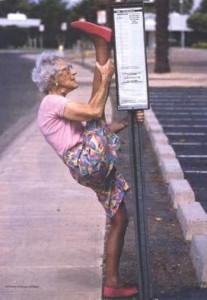The subject of stretching has historically been a somewhat controversial one among athletes, coaches and health professionals.
My review on evidence for and against stretching has highlighted little to show that stretching prevents injury in fact, studies have shown that static stretching prior to exercise on cold muscles can decrease force production and power performance.Based on current evidence, a dynamic and specific warm up in which the joints and muscles are taken through movements similar to those required of their sport will prime muscles for action and facilitate subsequent performance.
I am giving advice and tips based on my own literature review and years of experience as a physio in sport. I hope to be able to answer some frequently asked questions about stretching.
Why stretch? It has been shown to increase muscle length and joint ROM. It helps align collagen fibres during the healing process. It feels good.
What are we stretching? It’s not just muscle fibres that are affected by the action of stretching. It is widely believed that stretching will affect all the soft tissues including fascia, neural tissue and skin
Why are some muscles tighter than others? Firstly and importantly everyone’s flexibility varies- Flexibility is to some degree genetically determined. Muscles can become shortened through injury, overload and persistant poor posture- yep sitting at the computer for hours and slouching on the sofa will affect musle length. Factors such as age, gender, muscle bulk and temperature will all affect our degree of flexibility.
Are there different types of stretches? Yes, static – the individual gets into a stretch posture and holds the posture without moving for a period of time. Dynamic– this is stretching performed with controlled movement and contract- relax/ PNF– this is a technique in which the muscle group is contracted against resistance and then relaxed and a controlled stretch applied.
How to stretch? The principle is to stretch along the full length of the muscle from its origin to its insertion. There is often several ways to stretch a particular muscle and the most effective way depends on the individual. Stretch slowly and gently- listen to your body. Remember to breathe easily and not hold your breath. Varying stretches and the order in which they are performed is good, as each stretch will affect the tissues slightly differently.
How long should I hold the stretch for? Research suggests 15-30secs. Being too quick and ballistic can cause the muscle to react by tightening and shortening.
How many? 2-4 reps (as a guide)
How often? – At least 2-3 times per week, (as a guide).
When? Do specific dynamic warm up stretching exercise- then do your exercise activity and save the static stretch until the end of your exercise session when muscles are warm.You can add stretches into your daily life- when watching T.V or waiting for the kettle to boil- make sure you are warmed up first so don’t spring out of bed and stretch first thing- early morning runners- take note.
BUT I stretch regularly and it doesn’t seem to help my feeling of tightness- help! I have come across this situation in clinical practice quite often and it is frequently an issue of stability.
If forces are not being distributed efficiently in the body then some muscles will tend to do more then their fair share and become overladed, often tender, and shortened- when this happens you can stretch all you like but unless you deal with the root cause by more effectively sharing the work, the muscles will persist in feeling tight. For example- the hip flexors may be persistently used to stabilise around the pelvic area when the deep abdominals or gluteals are not working efficiently.Over a period of time this causes the hip flexors to tighten up and the gluts to become sore.
Infact, Myofascial pain can be made worse by passive stretching. In this case trigger points need to be addressed either through manual therapy or dry needling and active stretching.



